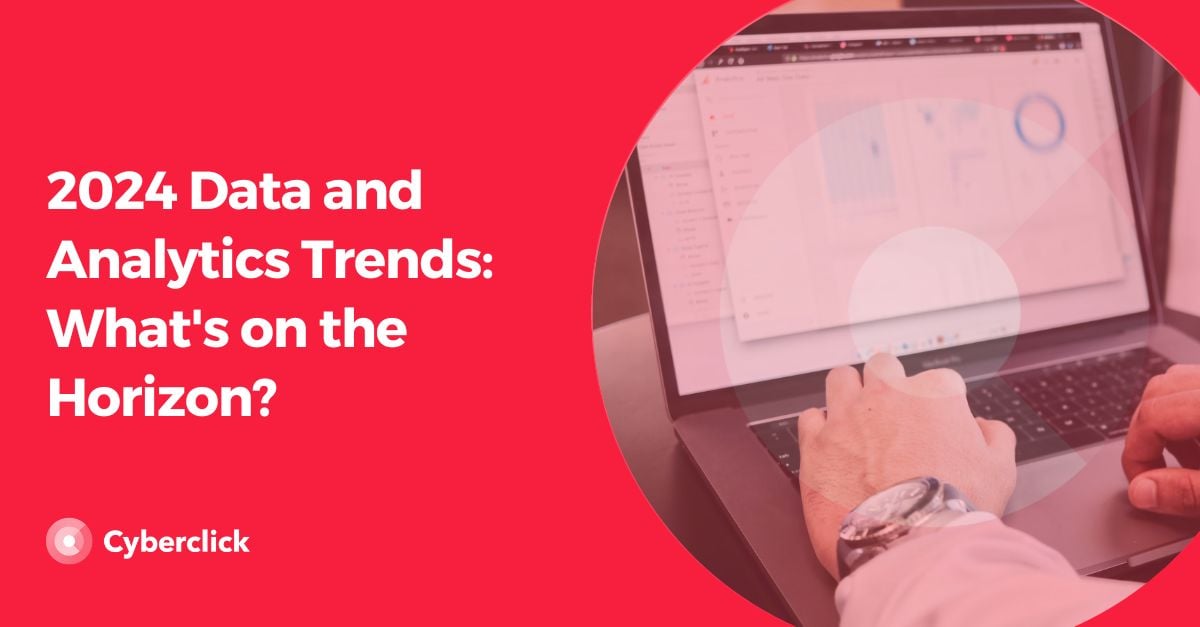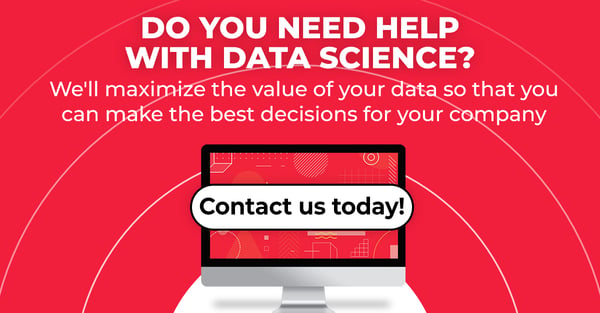Undoubtedly, data analysis and big data have led a revolution in the marketing landscape in recent years, fundamentally altering how companies harness information for their campaigns.
The common thread among major players in the advertising realm is their reliance on these tools. Consequently, data analysis and big data can be considered the bedrock for achieving and sustaining growth today. Curious about the trends in data and analytics for 2024? Discover them below and leverage them to maximize your marketing strategies!

Real-Time Big Data Insights: Harnessing Stream Processing
Big Data in Marketing
Big data in marketing refers to the real-time capture of a large volume of data, followed by analysis to glean insights into consumer interests and behavior. This process aims to formulate more effective strategies that yield superior results.
Until very recently, many companies did not have tools to capture all the data they generated in real time, leading to erroneous analyzes and outdated strategies. In fact, in 2020, companies only captured 56% of the data they generated and, of that percentage, they only used 57%.
In 2024 this will change. Thanks to technological advances, both the capture and processing of data will be within the reach of most organizations. This means that more information can be captured and analyzed more quickly thanks to new, more accessible big data tools.
Automation and Analysis with AI and Machine Learning
More and more organizations are using both AI and machine learning to analyze data and thus obtain valuable information faster than ever with less effort.
In fact, it is not only something that is happening in the field of marketing. In the medical sector, for example, artificial intelligence and machine learning have allowed doctors to go from spending between 4 and 24 hours analyzing a 30-minute video about a patient's neural activity, to doing so in less than half hour with the help of programs with algorithms based on machine learning.
Coming back to the marketing sector, information processing can be automated by up to 70% with the help of AI, and data collection by up to 64%. This translates into greater agility in the creation of strategies and a much shorter response time to trends. This also means that companies can use the time they have gained with data capture and processing automations on other issues that help them achieve their objectives.
Scalable, Cost-Efficient Management: The Potential of Data as a Service
Data as a Service (DaaS) utilizes cloud-based tools for the collection, analysis, and management of data. What sets DaaS apart as one of the most intriguing data and analytics trends of 2024 is its cost-effectiveness. It enables companies of all sizes to leverage big data benefits without hefty investments in storage platforms or proprietary solutions. DaaS democratizes data analysis, making it accessible to professionals across various roles in any company, a shift from its prior exclusivity to engineers or data scientists in high-level firms.
Platforms like Google and Microsoft offer DaaS tools, and numerous emerging organizations cater to diverse sectors. Notably, 40% of IT professionals use DaaS for data storage and backup, while a significant 90% of business leaders prioritize the democratization of data.
Data Lakes for Optimized Storage
Data Lakes are repositories where large volumes of raw information are stored, providing swift access for companies and data scientists to perform analyses. Anticipated to be a major trend in data and analytics for 2024, data lakes excel in storing unstructured data, offering flexibility across various data types compared to data warehouses.
The emergence of data lakehouses is poised to make a significant impact by blending the strengths of data lakes (flexibility) and data warehouses (data management capacity). This integration proves to be an excellent option for utilizing data seamlessly without the need to navigate through different systems.
While data lakes are expected to trend in 2024, it's worth noting that this concept is still relatively new, with technology in its early stages of development. The glimpses we see in 2024 will likely set the stage for a thriving market in 2026 or 2028.
Transition in Big Data Governance
Data governance refers to everything related to the policies and procedures intended to ensure the proper handling of data. In 2024, a significant shift is anticipated in everything related to data protection. Not only is it poised to be the year in which third-party cookies will finally disappear, but there's also an expectation that 75% of the world's population will safeguard their personal data through privacy laws, marking a substantial increase from the 10% recorded in 2020.
While big data is currently regulated to some extent, 2024 is expected to usher in more specific regulations for it. As a company, it's crucial to stay vigilant and ensure compliance with these evolving regulations.
Industry 4.0: Leveraging Technology for Enhanced Data Insights
Industry 4.0, also known as the Fourth Industrial Revolution, a term coined by Klaus Schwab, emerged in the early 21st century. It is characterized by the integration of robotics, the Internet of Things (IoT), AI, automation, cloud computing, and data exchange into various processes, among other aspects.
While data analysis has been fundamental throughout history, the advent of Industry 4.0 technology has elevated it to a new level, presenting valuable opportunities for the field of marketing.
In recent years, we've witnessed the impact of the elements mentioned above on marketing. In 2024, we anticipate a broader adoption by companies of Fourth Industrial Revolution technology applied to data analysis and marketing.
Increased Use of DataOps
DataOps is a set of data management techniques and practices that aim to improve the integration, automation and communication of an organization's data flows to make them more profitable and faster.
What DataOps brings to the data collection and analysis process (and its entire life cycle) is agility and speed. Due to this, many companies from very diverse sectors have begun to invest in these practices and techniques.
Another benefit of DataOps is that, since it covers several disciplines, it encourages collaboration between different teams that are in charge of data.
Data-Centric AI
Data-centric AI represents a novel form of Artificial Intelligence technology that revolves around understanding, deciding, and utilizing data as its core focus. Unlike its predecessor, which often centered on heuristics and rules, data-centric AI minimizes the likelihood of errors when applied to new data sets by integrating big data analytics and machine learning techniques.
By learning directly from data rather than relying solely on algorithms, data-centric AI enhances decision-making accuracy, resulting in more precise outcomes. Notably, this newer iteration of AI also exhibits greater scalability. Hence, it stands out as a prominent trend in data and analytics for 2024. Although it is emerging gradually, it marks the inception of a trend that more companies will likely incorporate into their strategies over time.
Cloud Data Ecosystems
Cloud data ecosystems or platforms refer to data centers situated in the cloud, accessible over the Internet and encompassing data storage and servers. As part of the digital transformation wave, an increasing number of companies are integrating these ecosystems, marking this a notable trend in data and analytics for 2024. Migrating your data ecosystem and business data to the cloud not only grants accessibility from anywhere at any time but also fosters greater democratization due to its more cost-effective nature compared to physical hardware.
In 2024 the expectation is that 50% of new cloud-implemented systems will be based on these ecosystems. Beyond the mentioned benefits, cloud data platforms offer scalability, adapt to the demands of data analysis, and can be aligned with shifts in company objectives and workload.
Edge AI
Edge AI involves the use of AI models on devices like mobile phones, cameras, or smartwatches, enabling real-time data processing without relying on an internet server. This approach empowers companies to identify new patterns and trends, leading to the formulation of more effective strategies.
The numerous advantages of Edge AI are gaining increasing recognition, positioning it as one of the most compelling data and analytics trends for 2024. Notably, its almost imperceptible latency and reduced bandwidth requirements stand out. Additionally, Edge AI offers enhanced data security compared to Cloud AI, as the majority of data processing occurs locally, ensuring a more immediate response. Finally, its applicability extends to remote environments with no internet access.
Data Scientist en Cyberclick. PhD en Astrofísica por la Universitat de Barcelona con más de diez años de experiencia en investigación mediante el análisis e interpretación de datos. En 2019 redirige su carrera profesional hacia el mundo del Data Science cursando el Postgrado en Data Science y Big Data de la UB, así como participando en el programa Science To Data Science (S2DS) en Londres. Actualmente forma parte del equipo de Data Science y SEM de Cyberclick.
Data Scientist at Cyberclick. PhD in Astrophysics from the University of Barcelona with more than ten years of research experience through data analysis and interpretation. In 2019 he redirected his professional career to the world of Data Science by graduating in Data Science and Big Data from the UB, as well as participating in the Science To Data Science (S2DS) program in London. He is currently part of Cyberclick's Data Science and SEM team.




_%20Advantages%20for%20Marketing.jpg)

Leave your comment and join the conversation